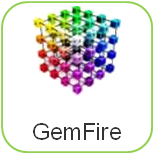Spring Data provides you several ways of consuming the REST repositories through a JavaScript frameworks. We have already provided a set of tutorials that discussed about using Spring Data REST with jQuery, AngularJS, Backbone.js and Rest.js. For this tutorial we’re going to explain you how could Sencha Touch be integrated for accessing the services. Sencha Touch, a high-performance HTML5 …
GemFire
Spring Data REST + GemFire + Rest.js Integration
In our previous tutorials I have explained about Spring Data REST + GemFire + jQuery Integration and backbone.js integration. REST (Representational State Transfer) is one of the most effective ways Spring Data REST provides for consuming services. Client can be client side frameworks like AngularJS, jQuery, Backbone and Rest libraries. In this tutorial, you’re going to see …
Spring Data REST + GemFire + AngularJS Integration
This tutorial explains the integration between Spring Data REST, GemFire and AngularJS frameworks. We are going to develop a REST service which returns the JSON response and that will be accessed by the AngularJS web page. 1. Tools Required We’ve developed this tutorial by using the following tools: JDK 1.6. Tomcat 7. Maven 3. GemFire …
Caching Data using Spring Data GemFire
In my previous tutorial, I have explained about the accessing data using Spring Data GemFire. GemFire is the in-memory data system used in the distributed environments. The performance and scalability achieved by GemFire by using the efficient caching techniques for storing in the in-memory. In this tutorial I will explain the purpose, in that connections …


